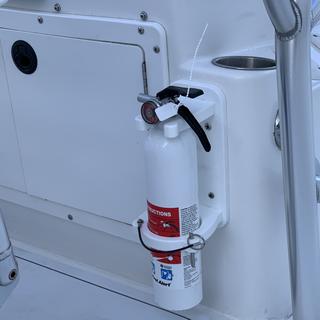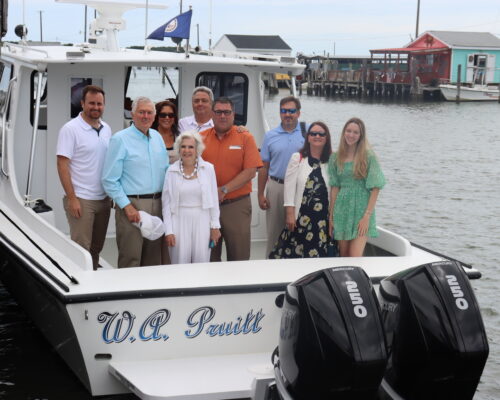As you anxiously await boating season, now is the time to take a good look at the fire extinguishers you have on board. Beginning April 20, new U.S. Coast Guard regulations takes effect that change extinguisher expiration dates and the minimum classification of fire extinguishers carried aboard newer boats.
The new U.S. Coast Guard regulation puts a 12-year expiration on all disposable (non-rechargeable) fire extinguishers. The manufacture date may be two or four digits (e.g., 08 or 2008) stamped into the bottom of the bottle or near the UL label.
And the other big change: boats that are model-year 2018 or newer must carry newer “5-B”, “10-B”, and “20-B” classified extinguishers rather than those with the older “B-I” and “B-II” labels, which are being phased out. The number in the new labels refers to the size (in square feet) of a potential fire the device is suitable to extinguish. For boats less than 26 feet and 2018 model year or newer, fire extinguishers must be unexpired “5-B” “10-B” or “20-B”. For 2018-and-newer recreational boats 26-65 feet, requirements vary. Check this table and flow chart from BoatUS Foundation to see what you need.
If your boat is a 2017 model or older, you may carry older “B-I” or “B-II” disposable extinguishers until their 12-year expiration date, and then they must be replaced with newer class extinguishers. The 12-year expiration date puts Coast Guard regulations in line with the National Fire Protection Association’s recommendations.
BoatUS strongly urges boaters to go above the minimum requirements for fire extinguishers on board. Two may be better than one when there’s a rush to make an emergency call or prepare to abandon ship. They also point out that some double-rated extinguishers protect against liquid and electrical fires, while triple-rated ones also protect against combustible fires.
“We expect that the U.S. Coast Guard Auxiliary and United States Power Squadrons vessel safety check program will soon include this new regulation as part of their free, no-penalty vessel exams. Because this change affects a critical piece of safety equipment aboard your boat, we also expect the U.S. Coast Guard will initially focus on education. You may want to start checking extinguishers now while your boat may be ashore this winter.”
Rechargeable and fixed-mount fire extinguisher regulations have not changed; they require regular servicing by a technician.
“We expect that the U.S. Coast Guard Auxiliary and United States Power Squadrons vessel safety check program will soon include this new regulation as part of their free, no-penalty vessel exams, says BoatUS Foundation Assistant Director of Boating Safety Ted Sensenbrenner. “Because this change affects a critical piece of safety equipment aboard your boat, we also expect the U.S. Coast Guard will initially focus on education. You may want to start checking extinguishers now while your boat may be ashore this winter.”
If your fire extinguishers aren’t mounted where they are easily accessible, buy a bracket and relocate them. “Burying them in the bottom of a compartment ensures they will be hard to reach when you need them the most,” Sensenbrenner points out. Make sure you’re familiar with the PASS method (Point, Aim, Squeeze, and Sweep) before an emergency arises.
-Meg Walburn Viviano




